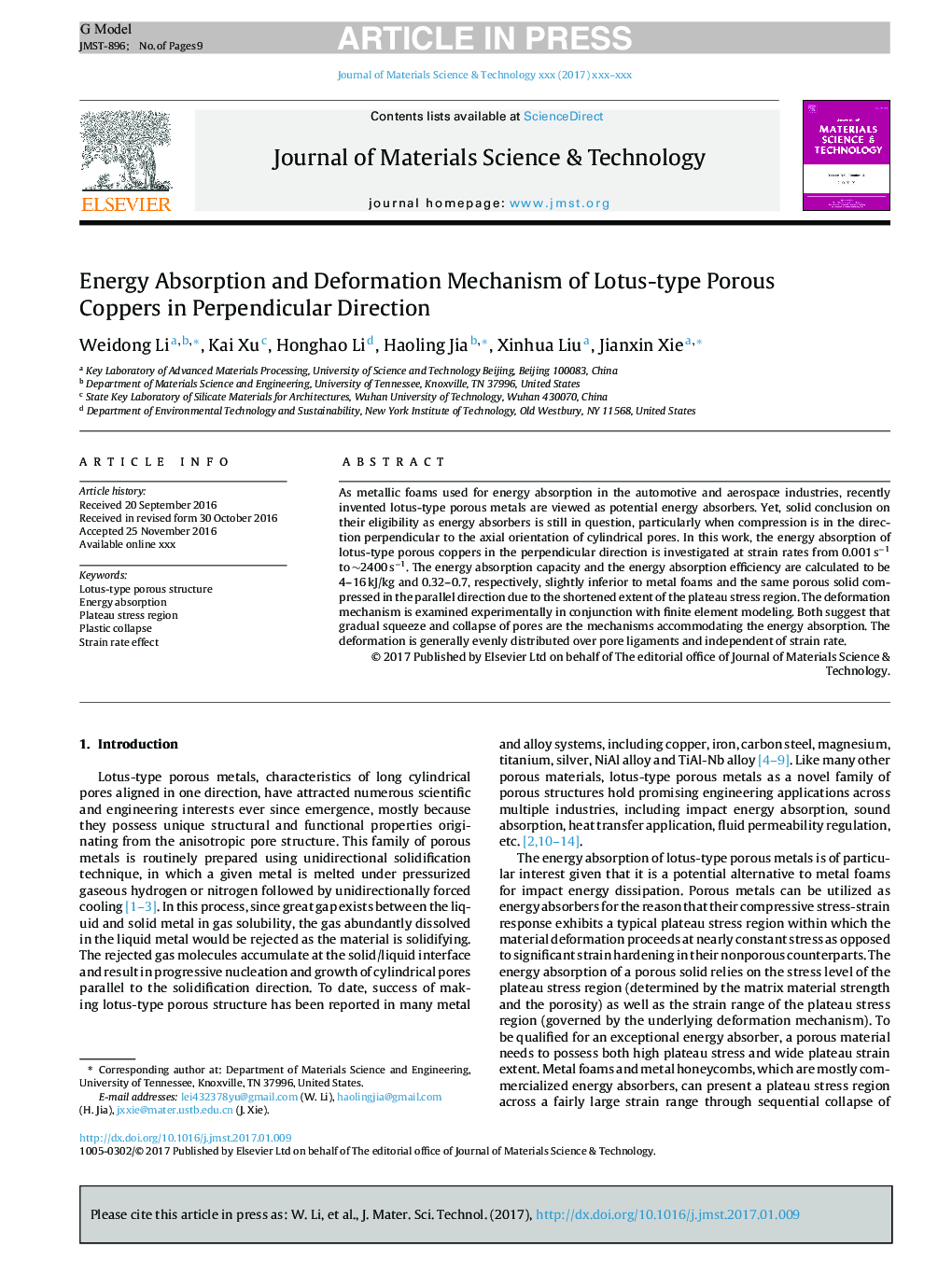| Article ID | Journal | Published Year | Pages | File Type |
|---|---|---|---|---|
| 7952174 | Journal of Materials Science & Technology | 2017 | 9 Pages |
Abstract
As metallic foams used for energy absorption in the automotive and aerospace industries, recently invented lotus-type porous metals are viewed as potential energy absorbers. Yet, solid conclusion on their eligibility as energy absorbers is still in question, particularly when compression is in the direction perpendicular to the axial orientation of cylindrical pores. In this work, the energy absorption of lotus-type porous coppers in the perpendicular direction is investigated at strain rates from 0.001Â sâ1 toââ¼2400Â sâ1. The energy absorption capacity and the energy absorption efficiency are calculated to be 4-16Â kJ/kg and 0.32-0.7, respectively, slightly inferior to metal foams and the same porous solid compressed in the parallel direction due to the shortened extent of the plateau stress region. The deformation mechanism is examined experimentally in conjunction with finite element modeling. Both suggest that gradual squeeze and collapse of pores are the mechanisms accommodating the energy absorption. The deformation is generally evenly distributed over pore ligaments and independent of strain rate.
Related Topics
Physical Sciences and Engineering
Materials Science
Materials Chemistry
Authors
Weidong Li, Kai Xu, Honghao Li, Haoling Jia, Xinhua Liu, Jianxin Xie,
